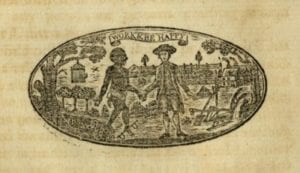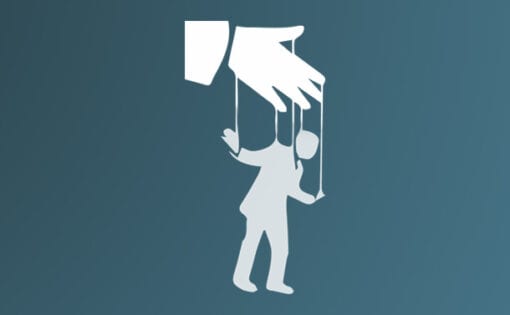
The Continental Congress officially established the Continental Army
Interestingly, the United States (U.S.) Army traces its lineage to the American Army of the 1780s, not the Continental Army that fought the American Revolution.[3] The U.S. Army, however, celebrates its birth on the 14th of June each year. This anniversary documents the birth of the Continental Army on June 14, 1775 when the Continental Congress authorized three different states to raise ten rifle companies, six ...

Ethan Allen and the Green Mountain Boys Capture Fort Ticonderoga in New York from the British
The Green Mountain Boys invaded Fort Ticonderoga in New York and under the leadership of Ethan Allen captured the fort from the British. They demanded the surrender of the sleeping British soldiers "in the name of the great Jehovah and the Continental Congress." With the fort they captured cannons and mortars that were sent to New England where they were used on the heights of Boston Harbor. These ...

The Start of the Revolutionary War: The Battle of Lexington & Concord begins with the Shot Heard ‘Round the World
At Lexington Green, MA, the British were met by approximately seventy American Minute Men led by John Parker in a British attempt to confiscate American arms. At the North Bridge in Concord, the British were confronted again, this time by 300-400 armed colonists, and were forced to march back to Boston with the Americans firing on them all the way. By the end of the day, ...

The First American Abolition Society was Formed in Philadelphia. Thomas Paine, Benjamin Rush, & Ben Franklin were Among its Mostly Quaker Membership
The Society for the Relief of Free Negroes Unlawfully Held in Bondage was the first American abolition society. It was founded April 14, 1775, in Philadelphia, Pennsylvania and held four meetings. Seventeen of the 24 men who attended initial meetings of the Society were Quakers, that is, members of the Religious Society of Friends. Thomas Paine was also among the Society's founders. It was reorganized in ...

Patrick Henry Gives his ‘Give me Liberty, or Give me Death’ Speech
On March 23, 1775, less than a month before the beginning of the Revolutionary War, Patrick Henry addressed the House of Burgesses in Richmond, Virginia. He gave a speech that has been remembered popularly as the “Give Me Liberty or Give Me Death” speech. Although Henry’s discourse was not recorded at the time (partially because Henry delivered it extemporaneously), Henry’s biographer, William Wirt, later gathered testimony ...

Edmund Burke’s Speech ‘On Conciliation with the Colonies’
Edmund Burke (1729–97) was a member of British Parliament at the time of this speech. He was elected as the representative from Bristol in 1774. Prior to his election, Burke served as secretary to the Marquess of Rockingham (1730–82), a Whig member of the House of Commons elected in 1765. While the Whig party had many factions, the faction led by Rockingham (who twice served as ...

Alexander Hamilton: The sacred rights of mankind…are written, as with a sun beam… by the hand of the divinity itself; and can never be erased or obscured by mortal power.”
When Loyalist writings began to appear in New York newspapers in 1775, nineteen-year-old Hamilton responded with an essay defending the colonists' right of revolution. Still a student at King's College, he followed up with this second pamphlet, expanding his argument on the purpose of legitimate government. The sacred rights of mankind are not to be rummaged for, among old parchments, or musty records. They are written, as ...

Seizure of Fort William & Mary at Newcastle
Acting on Paul Revere's warning the day prior, four hundred New Hampshire patriots, led by John Langdon, moved preemptively to capture the arms that the British had planned to seize. A prominent New Hampshire paper at the time said the capture was both “prudent” and “proper.” They also reminded their readers of the ancient Carthagians who consented to “deliver up all their Arms to the Romans” ...

Paul Revere’s First Ride: Warns the Citizens of New Hampshire that the British were Coming to Seize Firearms & Gunpowder
Paul Revere took his first ride (Months before his famous horseback ride into American history on April 18, 1775) on the icy Boston Post Road to warn the citizens of New Hampshire of a potential British troop landing with the express purpose that they were going to be seizing firearms, cannons and gunpowder at Fort William and Mary. Had the British been more aggressive and the weather less ...

The First Prayer of Congress on September 7, 1774
The first session of the Continental Congress opened the beginning of September in the year 1774 with prayer in Carpenter’s Hall, Philadelphia. Threatened by the most powerful monarch in the world, Britain’s King George III, America’s founding fathers heard Rev. Jacob Duché begin by reading Psalm 35, the Anglican Book of Common Prayer’s “Psalter” for that day Sept. 7, 1774: “Plead my cause, Oh, Lord, with ...

